At corner exit, for the slightest of moments, there was a suspension of disbelief. With a couple of degrees of steering still applied, and my right foot pressed hard into the firewall, I was transported behind the wheel of a different vehicle. The twin-turbo V8 (aided by a surface change) was able to convince the rear tyres to relinquish their stranglehold on the tarmac and permit the mere hint of power oversteer.
In that fleeting moment when power triumphed over grip I was transposed into a reality more understandable than our own – one where this display of bravado and performance would be executed by a brutish super sedan or slinky coupe.
But no, in a perfect encapsulation of our new warped existence, the vehicle in question was an SUV. A Lamborghini Urus SUV, sure, but a high-riding, kiddie-hauling, urban-friendly form of tribal transport none the less.
You will doubtless be familiar with the Urus’ purpose, with the four-door bull being Lamborghini’s most popular model both locally and internationally, re-enacting the Porsche Cayenne’s brand-saving heroics. The recipe is simple; wrap aggressive and eye-catching sheetmetal around shared architecture, send nuclear power to the tyres, and bask in a well-funded victory.
However, while singing from this now-familiar songbook, the Urus is forced to perform a series of increasingly difficult magic tricks that require that same suspension of disbelief that was washing over me as I applied the required corrective lock to arrest a two-tonne drift.

The first is convincing you of its worth. Our test car is fitted with not just cringe-inducing personalised plates, but six-figures worth of optional extras. Starting with a $395,888 base price, the local Lamborghini press office was able to transform this into a $497,803 tax magnet thanks to a focused dedication to box ticking.
Highlights include $17K for paint, almost $10K for the 23-inch wheels, another $10K in gloss black detailing, and $6K for the Q-citura seat stitching. Potential owners will want to set aside $500,000 as a starting point, lest they suffer the indignity of being out-gunned when dropping Bonathon off for his weekly fencing lesson.
While the Urus certainly looks every bit like a half a million dollar SUV from the outside, it can’t shake its Ingolstadt influences inside, sharing much of its switchgear with similarly sized siblings. Audi’s fingerprints are everywhere, from the wheel design, to the infotainment; almost everything inside the Urus is German with an Italian veneer.
But, for many buyers, that’s almost the point. This is a Lamborghini that isn’t scared of the everyday, that is capable of hauling more than two occupants with actual honest-to-god reliability, refinement and comfort. Value is in the eye of the ultra-wealthy beholder, and to them an RS Q8 may as well be a pov-pack Touareg. It just doesn’t have the clout.
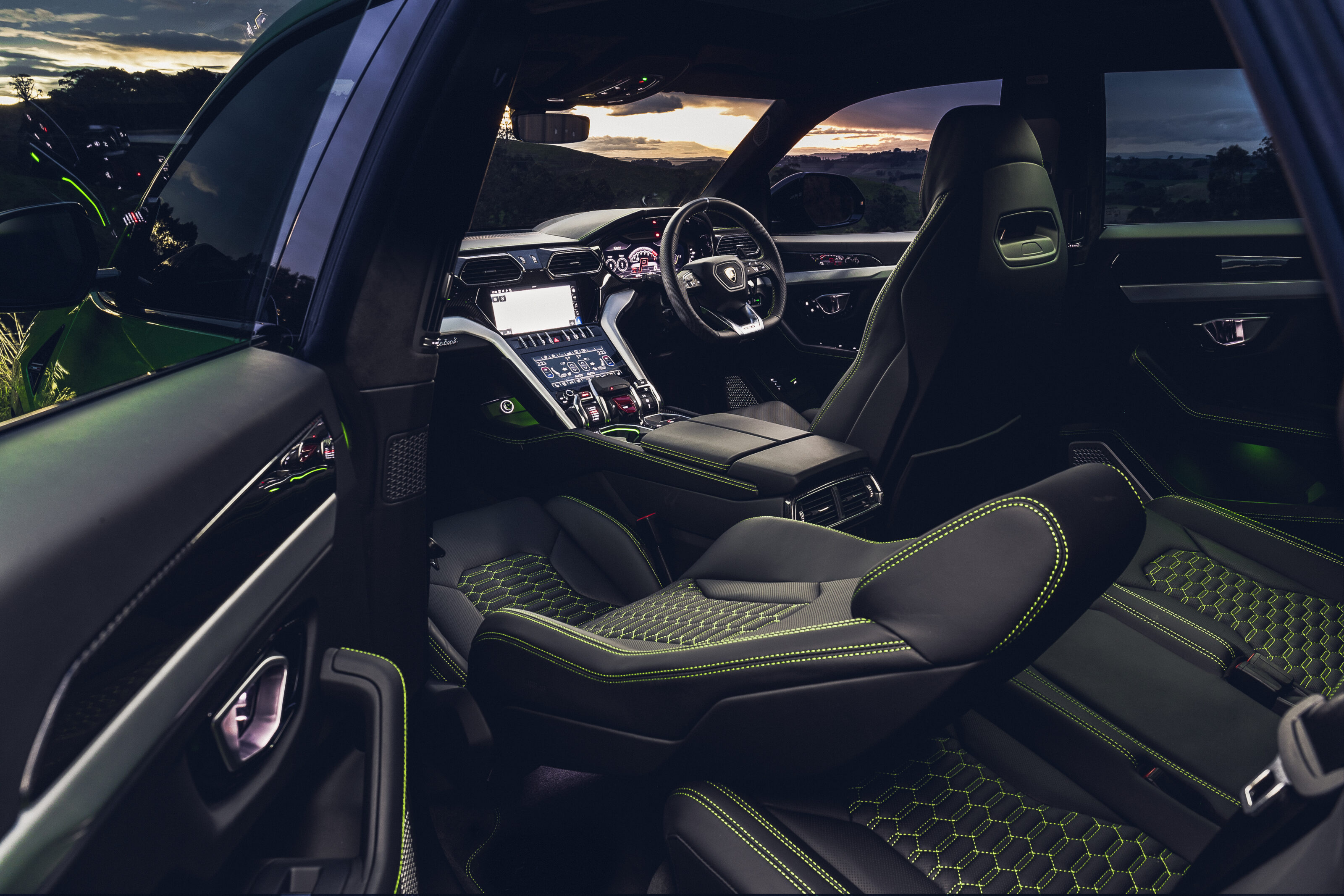
”Put your ear to the bonnet, and you’ll hear the final screams of dinosaurs being immolated”
To find out if there is more to the Urus than being a rolling display of affluence, we headed to Victoria’s West Gippsland region. The end destination was C425, or Korumburra-Warragul Rd, which connects the two eponymous towns. Running for 39km, it presents a challenging stage for the Urus to stand tall upon and reach deep into its bag of tricks.
Before we get to the good stuff, there is 100km of late-Autumn highway driving. For any other Lamborghini this wouldn’t be mentioned bar to note it was loud, and an inconvenience that stood in the way of fun. But, the Urus is unlike the Huracan and Aventador in that this transit stage is entirely inoffensive, and actually rather pleasant.
In its standard ‘Strada’ drive mode, the big Lambo has a ride quality that defies its 23-inch rims and low-profile rubber – it is tranquil and composed regardless of road surface. It is here I have the first of a series of revelations. Yes, the Urus is an SUV, but it isn’t a successor to the LM002, instead it’s a modern revival of the Espada with styling from the four-door Estoque concept car – just with extra ride height.
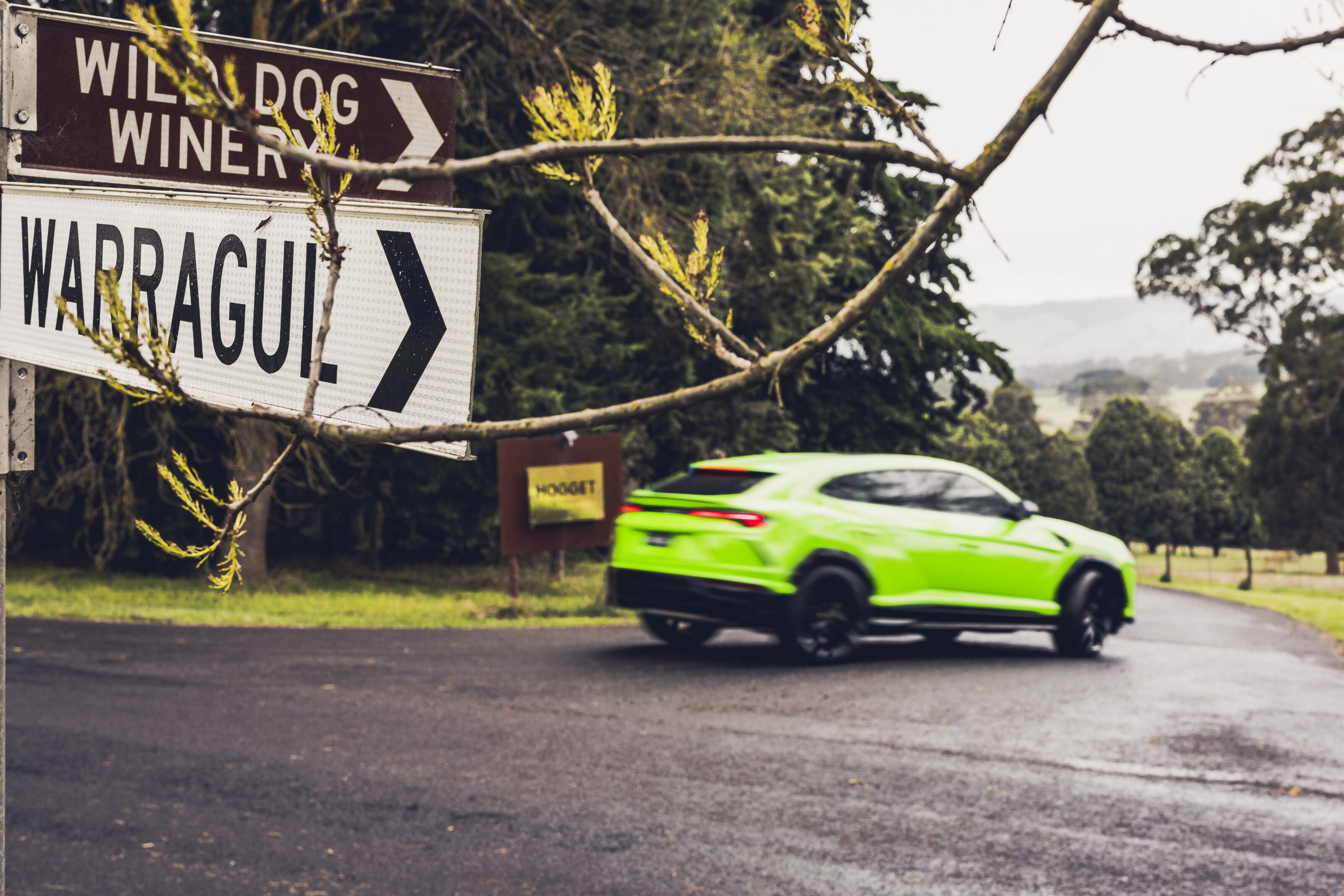
Finally I reach Warragul, and begin the descent toward Korumburra. Out here beyond Melbourne’s suburban crawl, the landscape encourages you to take a deep breath, to soak in the soothing beauty of the supersaturated green hills that bump gently to the horizon. C425 starts off slow, with long sweeping bends that play nicely to the Urus’s strengths.
The big Lamborghini is at its best in this environment, given room to play and put on its brutalist display of power. The 4.0-litre twin-turbo V8 under the bonnet isn’t unique – it can be found in a range of other products – but it is at its zenith here, deploying 478kW at 6000rpm, and 850Nm between 2250-4500rpm. Transferring that power to the tyres is an eight-speed torque-converter automatic that can deliver gearshifts both soft and smooth, or hard and fast.
Bring the Urus to a standstill before planting the throttle and you are given a clear indicator of its straight-line abilities. The V8 has a liquid gurgle at idle that sounds like bubbling lava. Put your ear to the bonnet, and you’ll be able to hear the final screams of dinosaurs being immolated in the eight combustion chambers. At launch the big bull charges forward, the speedo reading three digits in just 3.6 seconds. But straight-line parlour tricks are relatively easy to perform these days, and with electrification hitting its stride, a mid-to-high three second sprint to 100km/h (while still a gut churner) isn’t the showstopper it once was.
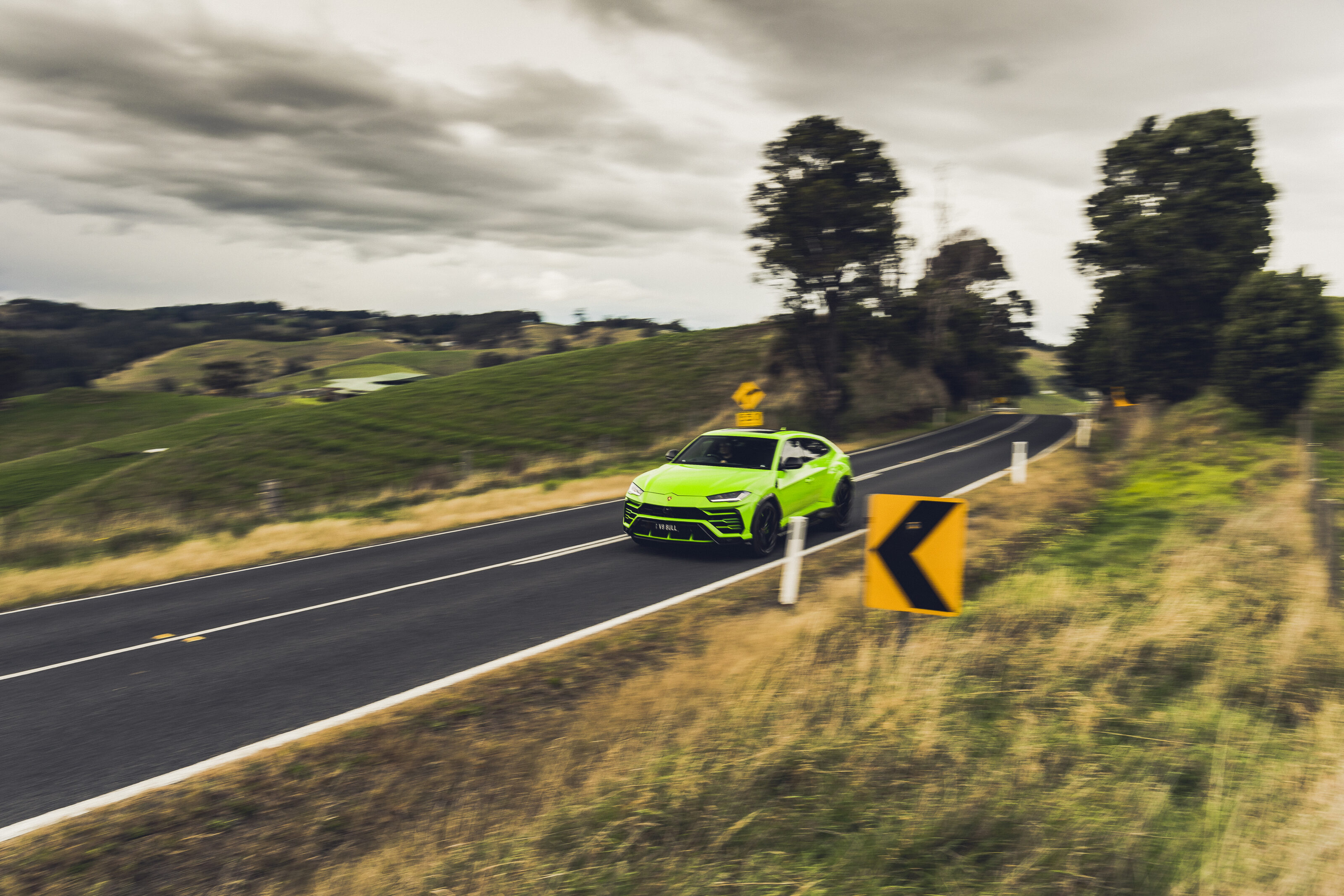
The best of C425 lies in the 10km north of Tetoora Road to south of Strzelecki. It’s here that the Urus’s depth of ability is truly put to the test. Heading south, the road begins to dive hard, with corner radiuses tightening. I take solace in the fact the 440mm carbon ceramic brake discs mounted to the front axle are grasped by 10-piston calipers, with the rear stoppers in the same size-class as some of Porsche’s finest metal.
Despite their impressive size the discs have an unenviable job, with the Urus weighing in at 2280kg while simultaneously being capable of reaching outrageous speeds in short order. You’ll want to get some heat into them before trying any heroics, though. Once you have, stamping the pedal stands the Lamborghini on its nose, and when the velocity is abated you can chuck the Urus into each bend with vigour.
The road winds down the hill, jinking knife-edge cambers on each left/right transition. The Urus rolls into these bends like a mastiff chasing a pomeranian, unrelenting in its pursuit of the next apex. There is an array of technologies helping the Urus perform athletic feats that’d leave certain sports cars befuddled. A self-locking central Torsen diff shuffles power appropriately, 40:60 normally, and up to 70 per cent front or 87 per cent rear, with the torque-vectoring rear diff directing up to 75 per cent of its twist action to either driveshaft Rear-wheel steering, and active anti-roll bars deliver freakish agility that’s not always that organic in feel.
This athleticism is aided by the direct steering at just over two turns lock-to-lock. Body roll is denied any presence in the experience, while the speeds required to force the front wide is frankly ridiculous. The prodigious grip is no doubt helped by an enormous footprint (the Pirelli P Zero rubber measures 285/35 at the front, 325/30 at the rear). Lamborghini is Pirelli’s only customer for tyres in this size.
The only hint at the technological trickery helping transform this heavyweight boxer into a dainty ballerina is the surreal numbness to its body control during the cornering process. This is an idiot-proofed experience, with a soft-edge to everything. Throttle adjustments do little to perturb the Urus mid-corner yet the feedback through the wheel is consistently remote. It’s all very impressive, but a tad inauthentic.
There are other quirks that chink the Urus’s armour – mainly the ‘Anima’ drive mode selector. The theatre of pulling the lever to change modes is appropriately dramatic at first, but the selector only goes one direction. Shifted from Strada to Sport and want to revert to standard? Too bad, you’ll need to scroll through all four other modes to get back.
Softening the blow is the breadth of ability in Sport. Unless you are at full attack, this setting is the sweet spot in 90 per cent of situations. Another niggle is apparent the first time you set off. Drive is selected by pulling the right paddle on the wheel, while park and reverse are found on the centre console.
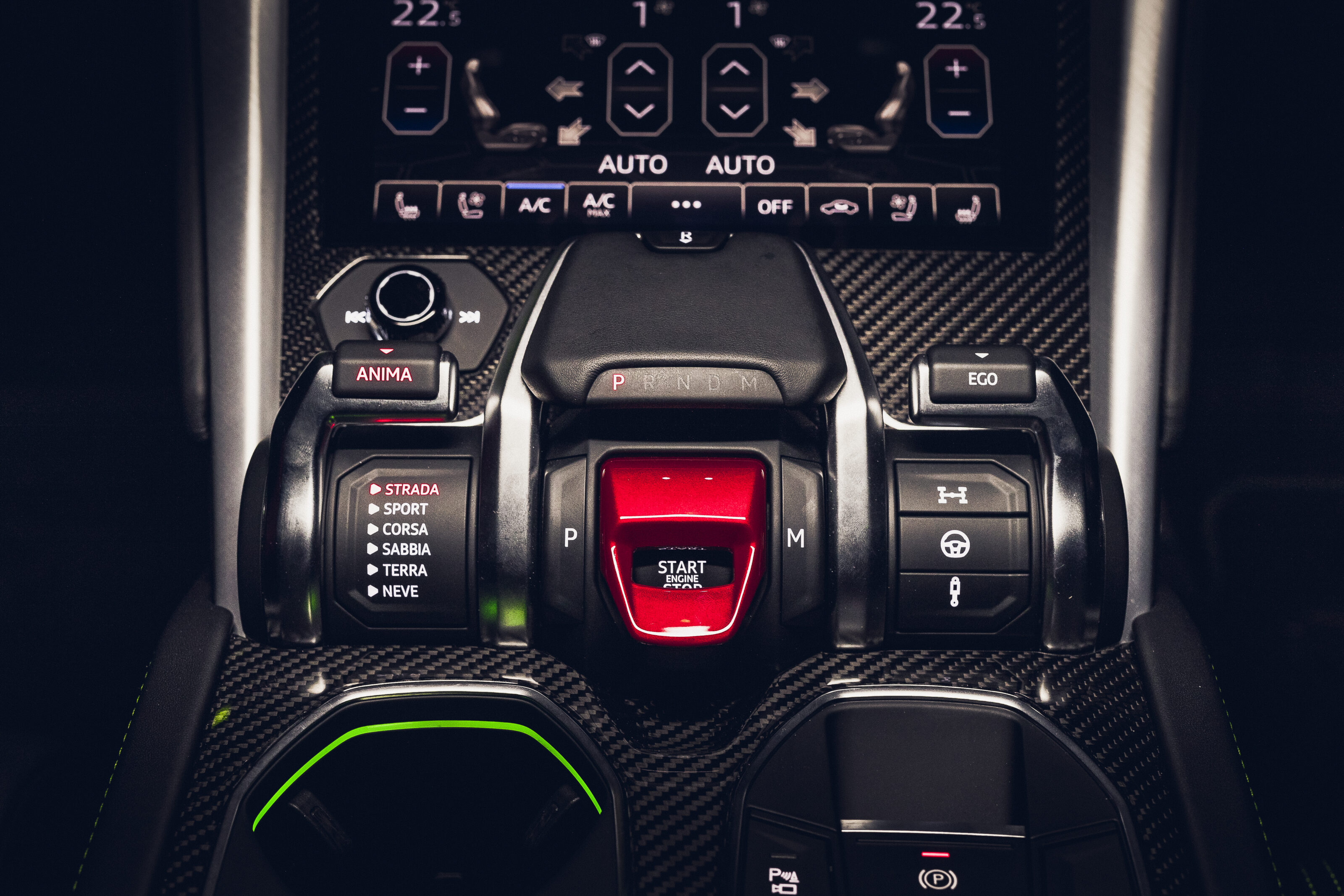
Half the reason to move away from the standard setting is the vocal theatrics. While relatively tame in its standard ‘Strada’ mode, the exhaust comes to life in Sport and Corsa. Drive around town with the windows up and every lift of the throttle sounds like a bag of gravel being dumped from the Urus’ bumper. Lower the glass and you are treated to a series of crackles and pops that alert everyone within the postcode of your presence.
Thumb the big ‘M’ for manual mode, and the Urus will still auto up-shift in its ‘Sport’ setting. Only in the maximum attack ‘Corsa’ will you encounter the 6800rpm soft-cut.
You can build and save a personalised variation that mixes and matches your preferred gearbox, steering and suspension setting. This can then be activated via the ‘Ego’ lever that sits to the right of the jet-fighter inspired starter button – the plastic covering of which is all a bit childish. But what’s the harm in letting your inner-child have some fun from time to time? This is a Lamborghini, after all.
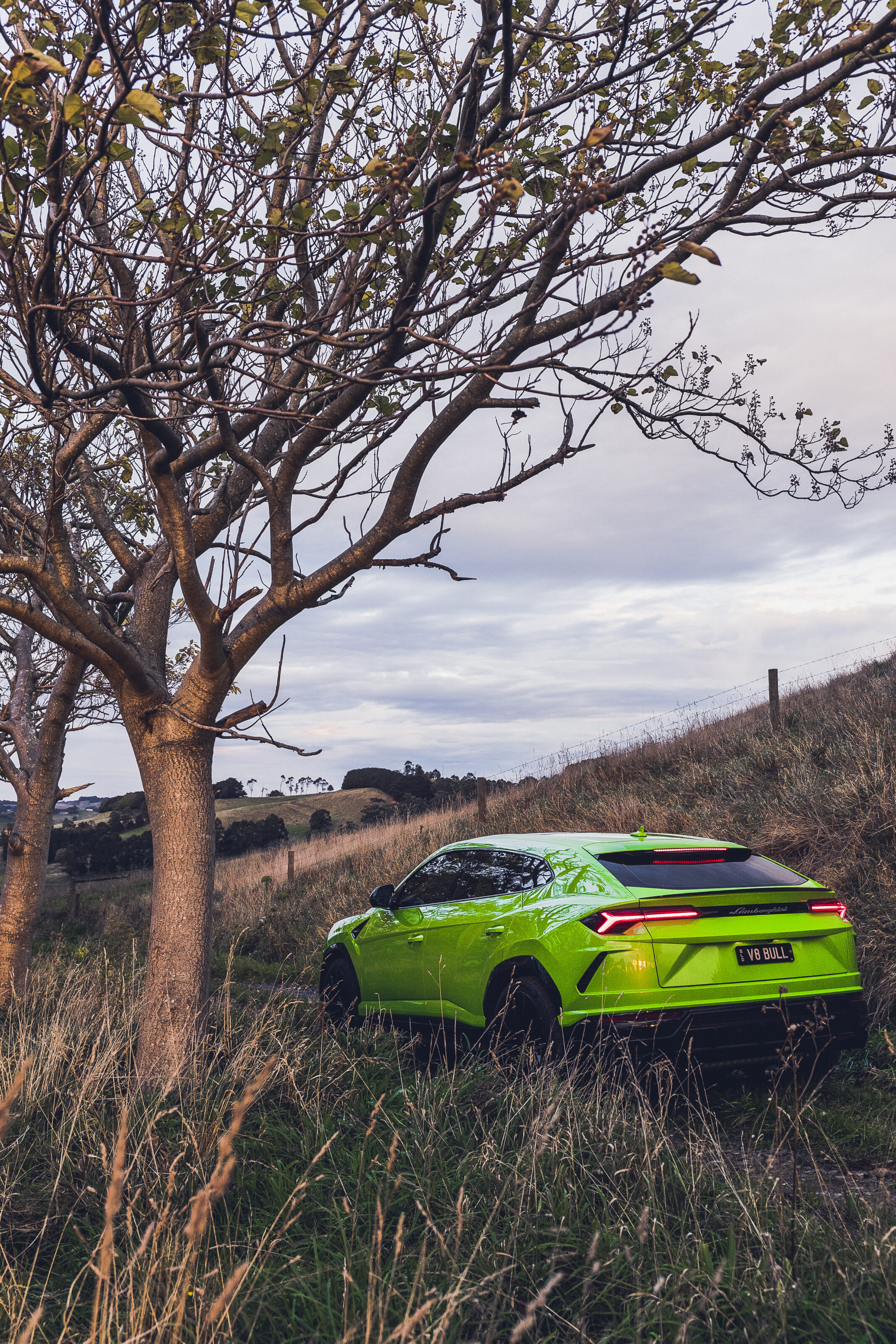
Further down the road I stop to admire the view at what looks like a clearing on the side of the road. Turns out it’s a stop for the local school bus, which dumps a trio of cherubs out in front of the hulking green machine. Swiftly, the lead child confirms that The Kids Are Alright, casting a knowing eye over the Verde Mantis paint before firing his loaded inquiry my way. “Is that a Lamborghini?” My confirmation of his suspicions is met with the appropriate ooh-ing and aah-ing. It’s nice to know that even the plumpest of Sant’Agata’s bulls can make a child’s day merely by being present.
While it’s nice to cosplay as a dogecoin billionaire for a day, not everyone is as enamoured with the appearance of the Lambo. Two members of the Victorian Police stop for a look, and simply mutter “The green is a bit much, isn’t it?” with a sneer before leaving. A sincere and enthusiastic thumbs up and ‘A-OK’ sign from what looks like a member of ZZ Top at the next intersection helps level the scales of public opinion.
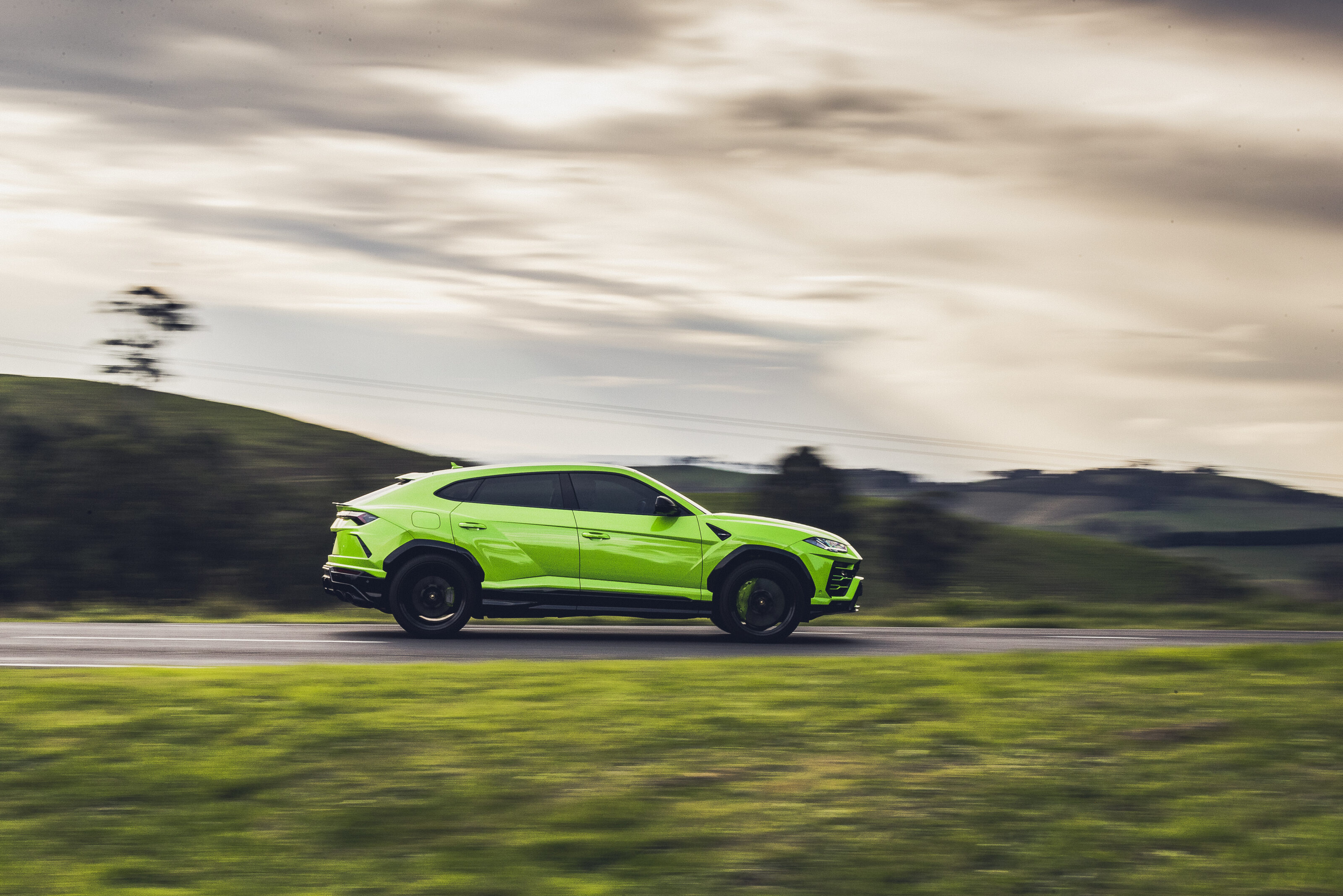
In building the Urus, Lamborghini hasn’t lost any of its sense of fun. It’s as ridiculous and outlandish as you’d expect from an acid-coloured vehicle with a bull badge. It has produced an SUV that is as comfortable doing a Toorak school run as it is crossing continents, setting lap times at Phillip Island, or tackling a challenging driving road – cynicism be damned!
The question is now whether you are ready to accept this new reality, warped by a previously unfathomable feat of technology. The answer, for the most part, depends on whether you have it in you to find the Urus’ larger-than-life character charming. While it’ll never persuade with delicacy or subtlety, it’s savagely effective.
The sun dips over the hills as we approach the old coal town of Korumburra. The LEDs flick on, bathing the road in 6000 Kelvin white. In that tunnel of light I try to process the way the Urus dismantled C425. That, in itself, requires a suspension of disbelief that’ll take me some time to work on.
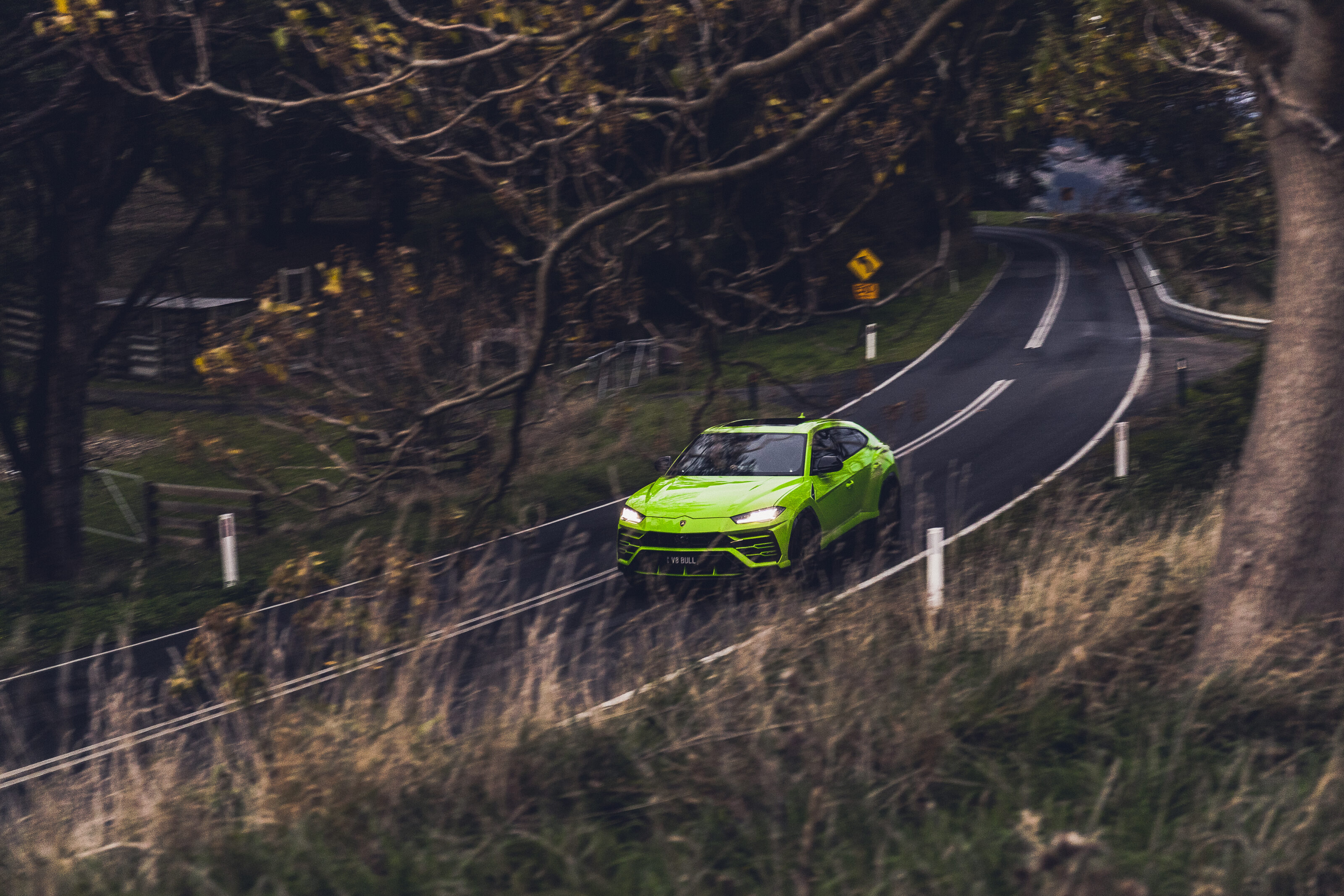
39km: 85 Bends
C425 sits in the sweet spot in terms of length for both down-and-back runs straight from Melbourne and larger day trips. At night, the return run transforms into a Japanese-style touge, with nearby town lights visible from the winding ridge line. You can stop for food at the book-end towns, though the Wild Dog Winery offers a more boutique experience. A number of lookouts pockmark the route, but are often only accessible via dirt.





